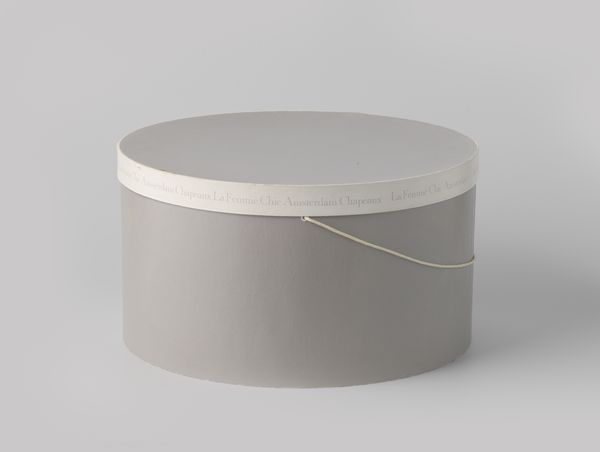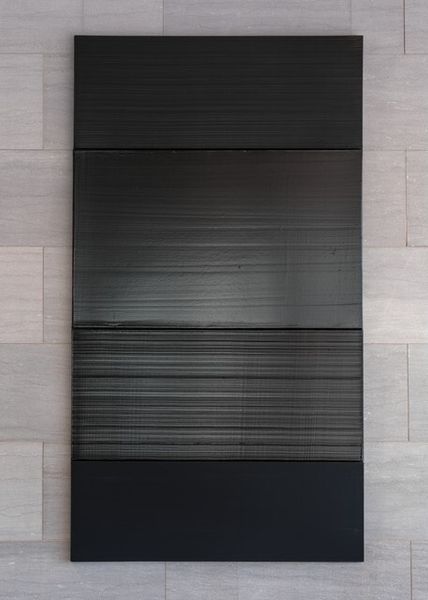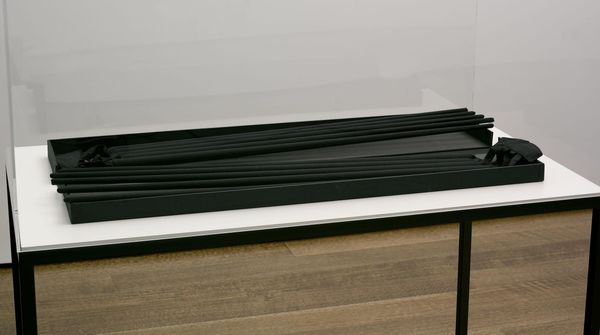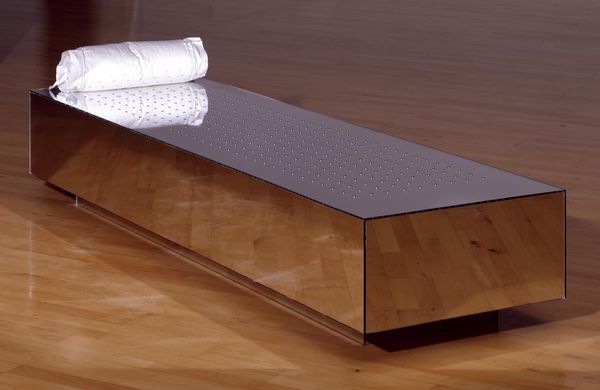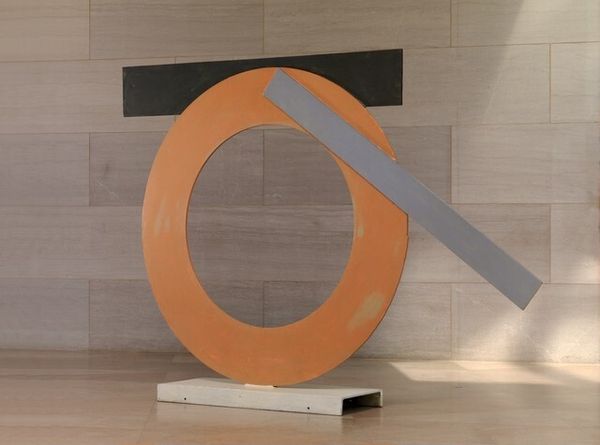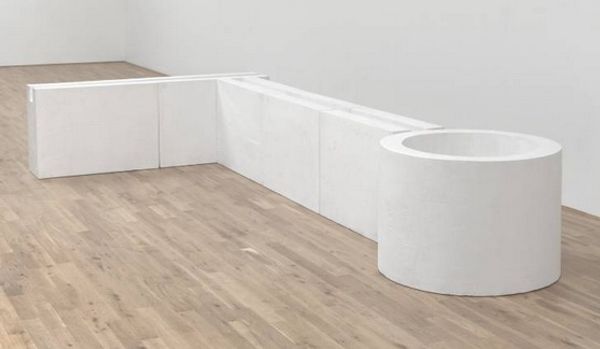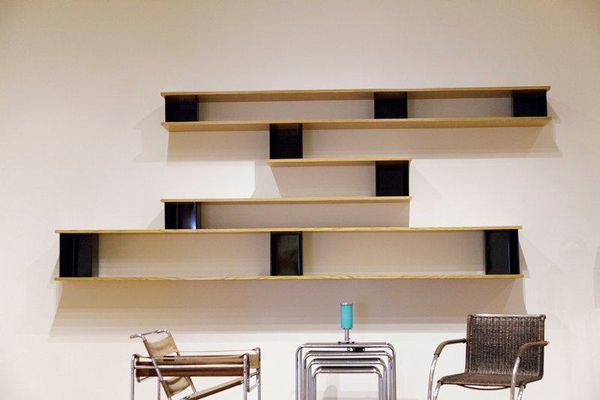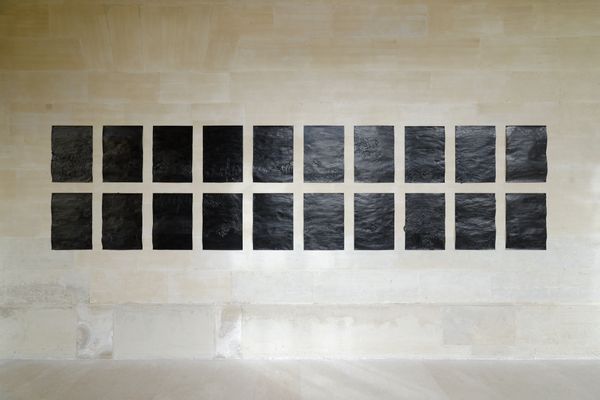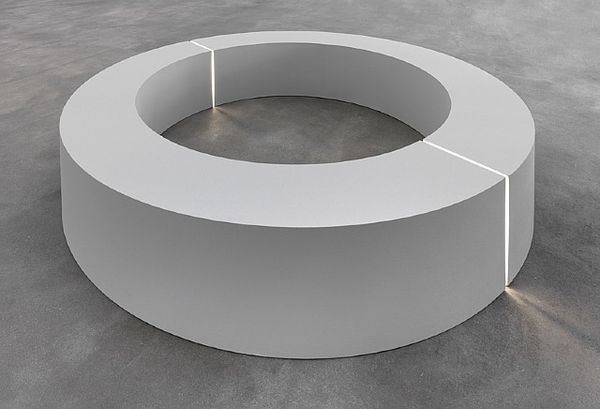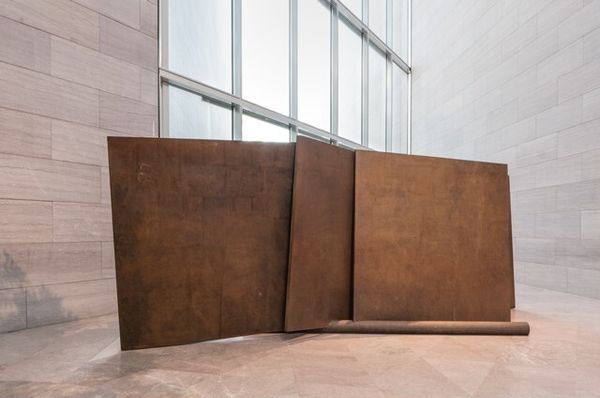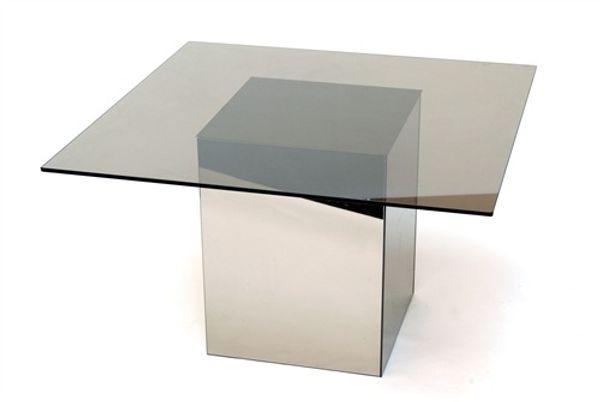
sculpture, resin
#
contemporary
#
minimalism
#
sculpture
#
geometric
#
sculpture
#
abstraction
#
resin
Dimensions: overall (height by diameter): 53.98 × 142.88 cm (21 1/4 × 56 1/4 in.) gross weight (approximate): 2041.187 kg (4500 lb.)
Copyright: National Gallery of Art: CC0 1.0
Editor: This is Roni Horn's "Opposite of White, v. 2 (Large) (A)", a resin sculpture made between 2006 and 2007. It’s so solid and present; the texture makes me want to reach out and touch it. How do you interpret this work, considering the socio-political elements that might be at play? Curator: That impulse to touch is important, as the institution mediates our experience. The smooth, industrial resin invites interaction, but gallery spaces often discourage that, setting up a tension. Horn often uses industrial materials. How does the pairing of an object with these qualities in the rarefied gallery space create a tension between the object’s potential and its display context? Editor: That's a really interesting way to look at it, how the gallery context changes how we interact with art. Are there any other things that affect how the sculpture might be interpreted? Curator: Well, consider Horn's broader body of work. She's deeply interested in ideas of identity, place, and repetition, frequently revisiting themes across different media. So, placing this piece within that larger context, we see the 'Opposite of White' series. This sculpture's title and the use of a non-traditional art material is making some statement, do you agree? Editor: Yes! The title "Opposite of White" is intriguing. It makes you think about the concept of minimalism and challenges you to find where those opposites exist. It seems to ask whether "white" can even truly be a monolithic term. Curator: Precisely! And think about who gets to decide what "art" is, and what it can look like, considering the political implications inherent in institutional art collections. This minimalist object, devoid of figuration, relies on its material presence and the gallery’s framing. It subtly prompts us to think about power structures within the art world itself. Editor: I never thought of it that way, seeing it as a reflection of those power dynamics! This piece invites far more questioning than I first realized. Curator: It makes you reconsider the relationship between art, the space it inhabits, and its socio-political setting. That's the most valuable takeaway here.
Comments
No comments
Be the first to comment and join the conversation on the ultimate creative platform.
